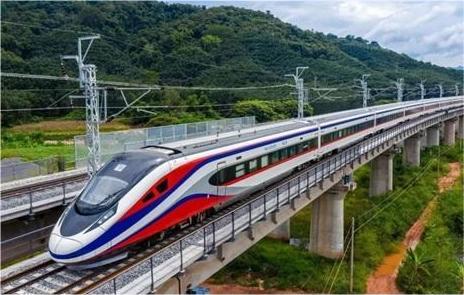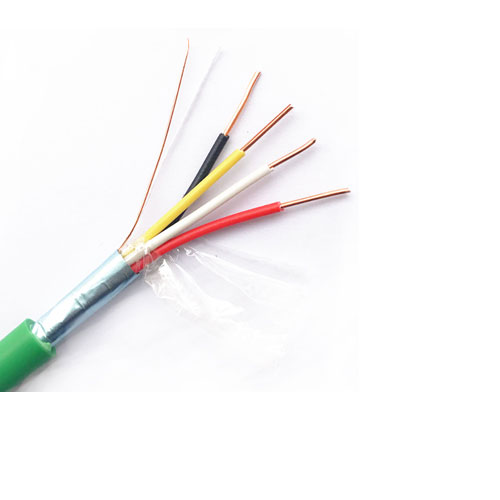With the continuous improvement of the degree of intelligence of rail transportation, the demand for data transmission compared to the traditional situation has also increased substantially. As the carrier of data transmission, data cables play a vital role in the safe operation of rail transit vehicles.
The data cables currently used in railroad vehicle communication systems are mainly categorized into railroad vehicle bus cables and railroad vehicle Ethernet cables according to their functions.

Data bus cable
This type of data cable is based on the rail transportation industry fire performance requirements, under fire, the cable burning smoke is very small, the smoke is non-toxic and corrosive as well as non-deferred combustion, the cable has a very good EMC characteristics. Used for multifunctional data transmission in the car.
MVB Cable
Train control special cable is used for controlling speed and braking system, which plays a major role in the operation of rail vehicles.
WTB cable
Provide monitoring system and collect information for the train, specializing in the collection of data used for the train along the unexpected conditions in time to transmit the computer control center, in order to facilitate the computer through the WTB train bus to quickly send out the braking instructions.
Cable structure
1 .Conductor adopts multi-strand tinned copper
2 .Insulation is made of solid polyolefin
3 .Shield adopts aluminum + tinned braid
4 .Sheath adopts low-smoke halogen-free flame retardant polyolefin ( black )
Network bus cable
Railway traffic to the network end communication use in 100MHZ, for a large number of data transmission, to meet a variety of vehicles internal control instruments, monitoring system images, sound and other needs, the cable has a high-speed transmission, EMC optimization, low smoke halogen-free flame retardant rail transit use.
CAT5/5e (Category 5/super Category 5 cable)
CAT-5 cables have an increased winding density and a high-quality insulating material overcoat. The transmission frequency is 100 MHz, and they are mainly used in 100BASE-T and 10BASE-T networks, which are the most commonly used Ethernet cables.
CAT-5e (Category 5 Extra), which offers significantly higher performance with higher attenuation to crosstalk ratio (ACR) and signal-to-noise ratio (S/N ratio), and smaller time-delay variance than Category 5 cables.
CAT6 (Category 6 cable)
Also known as “Category 6” Ethernet cable, it transmits at frequencies up to 250 MHz and at a maximum speed of 1 Gbps over 100 m. Compared to Category 5 cable, it offers better performance in terms of crosstalk and return loss, making excellent return loss performance even more important for high-speed network applications.
CAT7 (Category 7)

Also known as “Category 7” Ethernet cable, it is used for monitoring and transmission of video images inside and outside the train, as well as digital transmission of train intelligence.
With a transmission frequency of 600 MHz, a transmission speed of 10 Gbps, and a standard outside diameter of 8 mm for single wires and 6 mm for multi-core wires, CAT7 offers faster transmission speeds than CAT5 and CAT5e, which is advantageous for intelligent driving in the future.
Cable Structure
1 Conductor adopts multi-strand tinned copper
2Insulation is made of solid polyolefin
3Aluminum shield
4Tinned copper general shield
5Sheath made of low smoke halogen free flame retardant polyolefin ( black )
The railroad data cables CAT7/CAT6/CAT5/CAT5e/MVB/WTB produced by TST Cable, etc., the products meet:
EN45545-2 (under fire conditions, the smoke produced during combustion should be small and non-toxic, and the cable can prevent the flame from burning along the cable) standard.
TB/T1484.3 (cable toxicity index is less than 5, combustion transmittance is not less than 80%, the release of hydrogen chloride should not be greater than 0.5%, etc.) standards.
It has ultra-high double oil resistance, acid and alkali resistance, high flame retardancy and other properties, which guarantees the stable operation of the data transmission system of railroad vehicles.
At present, TST CABLE has provided reliable connection solutions for Beijing Metro, Shanghai Metro, Guangzhou Metro, Nanjing Metro and other rail transportation projects. In the future, the company will continue to plough deeper into the field of rail transportation, and contribute its modest strength to the development of rail interconnection technology!
Also available in:
English

